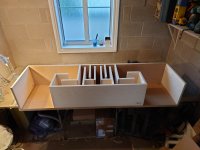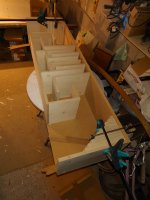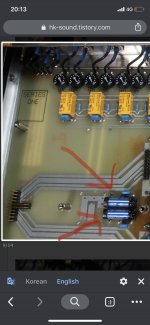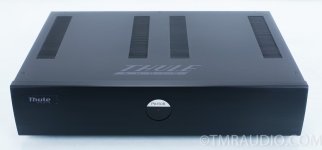Translated from Mr Ohashi's Blog (Google translator)
True Frequency Response
October 1, 2024
Today I would like to show you the frequency characteristics of vacuum tube amplifiers, which you basically do not know (usually manufacturers do not provide them).
The data I will publish today is the data stored as in-house records at the time of shipment of the assembled products, converted into a semi-logarithmic graph, and all of them are true frequency characteristics without any corrections.
Catalogs often state "frequency characteristics 20Hz~20kHz", but this only indicates the standard -3dB point and is not a document to evaluate the performance or actual state of the amplifier. This is because what has the greatest impact on sound quality is "behavior within the audible range", which can be said to be the individuality (character) of the amplifier.
Now let's take a look at the frequency characteristics of our representative model.

SV-S1616D/KT150 Specifications

SV-S1616D / PSVANE WE300B Specifications
The reason there is no big difference between these two models is that they share the same basic platform and use the same output transformer. Please note that the 300B has a slightly "sloping shoulder" on the high-frequency side.
Next, we will show the difference in push-pull. This is the difference in sound between multi-electrode and triode amplifiers, and it is a big difference.
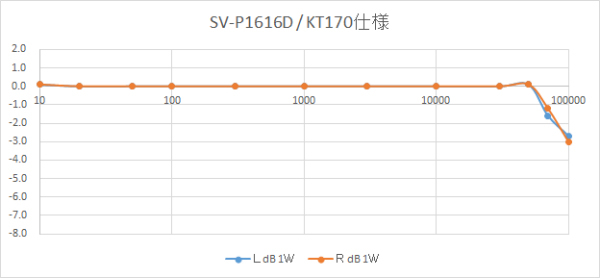
SV-P1616D/KT170 Specifications
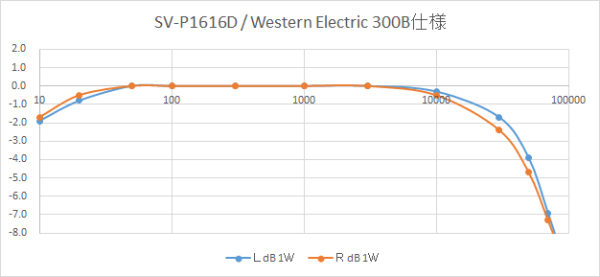
SV-P1616D / Western Electric 300B specifications
I think many people will be surprised to see how different they are. The KT170 specification is super flat, while the 300B specification has a natural roll-off at both the top and bottom. This roll-off is actually closely related to the plot position on the voicing chart, and to put it simply, we tend to feel that the flatter the response of an amplifier, the more to the upper right (sharper and cooler), and the larger the roll-off, the more to the lower left (softer and warmer), which coincides perfectly with the frequency characteristics.
Next is the transmitting tube amplifier.

SV-S1628D/845 Specifications
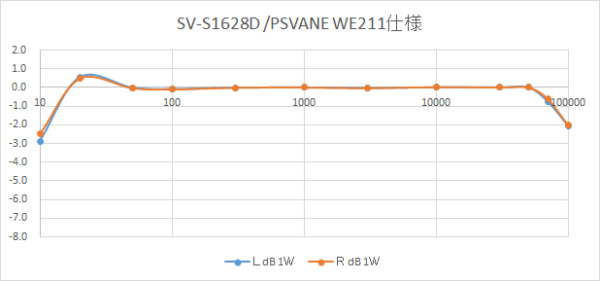
SV-S1628D/211 Specifications
These two data were obtained when two types of vacuum tubes were delivered on the same machine, so they are quite similar, but they match the frequency characteristics of a typical triode amplifier. However, please note that there is a "shoulder" on the higher frequency side than the 300B. In this case, the PSVANE WE211 has a higher high frequency extension than the regular 211, so it should be noted that the roll-off point of the regular 211 is often a little lower.
Next, let's look at the SV-8800SE.

SV-8800SE / KT170 Specifications
What I want you to pay attention to here is the difference with the SV-P1616D / KT170 specifications above. Basically, it has a wonderfully flat response, but while the P1616D is flat down to 10Hz, the 8800SE is flat up to 100kHz (and above) and actually extends to 200kHz and above.
The reason why the P1616D is positioned towards the top right of the chart in terms of tone is that the 8800SE has a gentler (or, if you will, more natural) roll-off at both the top and bottom ends. As mentioned above, this roll-off has a sensitive effect on the sense of hearing, but it is the "coupling capacitor" that filters the DC component superimposed on the signal that gives the sense of density to the ear. It is safe to say that this difference in frequency characteristics has a major impact, and that is why many people feel that it is particularly effective with multi-electrode amplifiers.
Finally, the SV-91B.
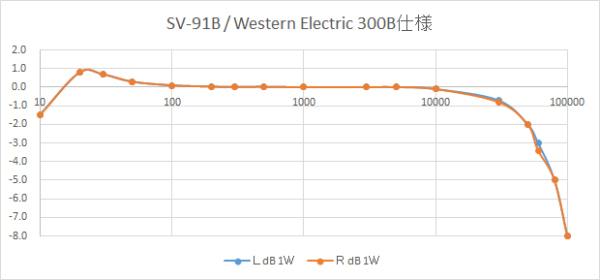
SV-91B / Western Electric 300B specifications
One of the features of our amplifiers is that they are slightly higher at around 35Hz, which is actually the lowest frequency we feel, slightly above 20Hz. However, what is important in voicing an amplifier is not how far it is extended numerically, but the overall balance.
If there is a "swaying balance" of sound, what Hz would be the center?
Generally, the audio world considers 1kHz as the standard, and we also set many reference points at 1kHz in our measurements. On the other hand, when it comes to creating sound, if humans can perceive 20Hz to 20kHz, 5 octaves above 20Hz is 640Hz, and 5 octaves below 20kHz is 625Hz, so I personally create sounds with the idea that the center of gravity of sound is at 600Hz to 650Hz. As the
audio industry has moved from vacuum tubes to semiconductors, flat sounds have become the norm. However, without even taking the example of wood used in guitars, I think it's fine and should be possible for there to be amplifiers with a clear, bright tone like maple, and a warm, rich tone like mahogany.
The rich musical quality of a vacuum tube amplifier is ultimately achieved by bringing out the inherent resonance of the material. We always aim to create an amplifier that has a "good sound" rather than just "good characteristics."

















